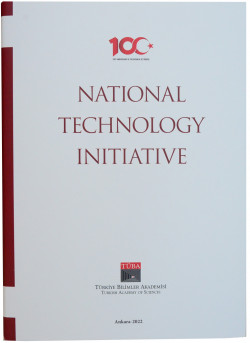National Technology Initiatives in Satellite Technologies

National Technology Initiatives in Satellite Technologies
There has been a need for communication since the existence of mankind. The man has tried to solve this problem in various ways, such as, by using cave paintings, smoke, fire, or trained pigeons. The printing press was the main tool for communication for some years and then the telegraphs were the first tools of wired communication. The telegraph was introduced in 1838 and the telephone in 1876. Image sending was used for the first time in 1926. In the 1970s, wireless communications became eminent. Today, mobile telephone and satellite communications become the usual means of communication for daily life. For satellite communications, Türkiye initially chose to rent satellite channels from foreign satellite companies. But this was neither strategical nor economical, so Turkish authorities decided to establish Türkiye’s own National Satellite Systems. In order to achieve this goal, Türkiye has started satellite studies since the 1990s. The first Turkish own satellite TÜRKSAT-1A crashed into the ocean due to a malfunction on the third floor of the rocket. On 11 August 1994, TÜRKSAT-1B communication satellite was launched into space. TÜRKSAT-1B, TÜRKSAT-1C, TÜRKSAT-2A, TÜRKSAT-3A, TÜRKSAT-4A, TÜRKSAT-4B, TÜRKSAT-5A, TÜRKSAT-5B were successfully launched and for the time being TÜRKSAT-3A, TÜRKSAT-4A, TÜRKSAT-4B, TÜRKSAT-5A and TÜRKSAT-5B have been continuing their duties. TÜRKSAT-6A, which was produced with domestic resources, is planned to be launched in 2023. It is planned to complete the test activities of the TÜRKSAT-6A satellite in the 2nd quarter of 2023 and to make it ready for transportation and to launch it in the 3rd quarter. It is aimed to use the experience, infrastructure and flight equipment gained within the scope of TÜRKSAT-6A in our future satellite programs, thereby reducing foreign dependency in the satellite sector. BİLSAT and RASAT, are low orbit satellites developed by TÜBİTAK UZAY. GÖKTÜRK-1 and GÖKTÜRK-2, which are also low orbit satellites, can carry high resolution Electro-Optic (E/O) cameras. Within the scope of the GÖKTÜRK-1 Project, the Satellite Assembly, Integration and Test Center (USET) was established. This center was a critical infrastructure for the domestic production of communication satellites. The above-mentioned developments inevitably inspired institutions-organizations and young engineers in Türkiye and increased momentum for satellite development activities in LEO orbit. The TÜRKSAT Model Satellite Competition also pioneered the national mobilization in this field. Afterwards, this competition was included in TEKNOFEST. TÜRKSAT organizes the 7th Model Satellite Competition. TÜRKSAT aims to train human resources in the field of satellite and space technologies. While fulfilling these objectives, TÜRKSAT will increase the quality of human resources and provide a certification service in the field of satellite and space science. This will be beneficial for our friendly countries. Digitally produced training materials will be presented to the relevant international units so that a sustainable system will be established. This system will minimize the negative human factor and will provide universally accepted certificates to be produced. This system will be able to be used by the universities and students may have certificates during their education.
